Learning about tradition and remembering the past is the only way to keep the old traditions alive. Passing the knowledge on to the future generations is not easy, especially in places where ethnics are not living there anymore.
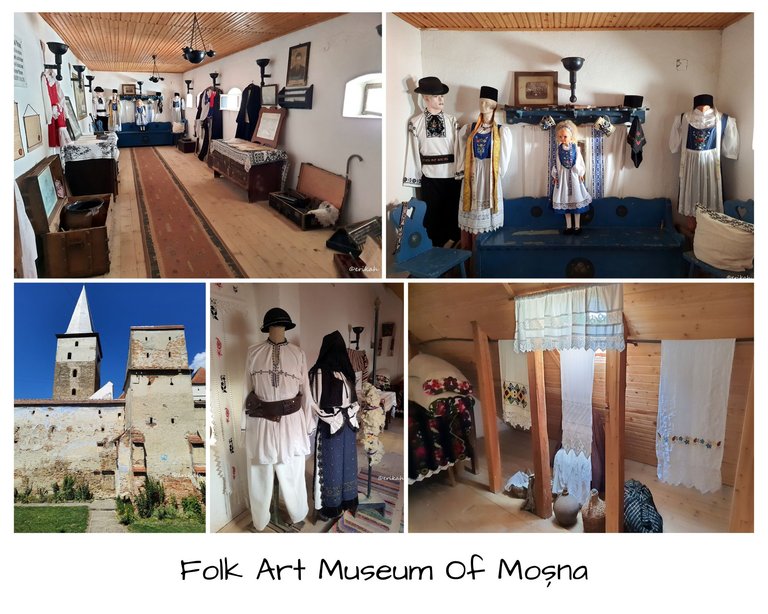
One place like that is Moșna, a not so small village in Sibiu county, where most, if not all Saxons left the country long time ago. However, there's the Evangelical church and fortress, that will always remind people of the past. As an addition to the church and fortress, there's a museum set up in some of the rooms in one of the walls.
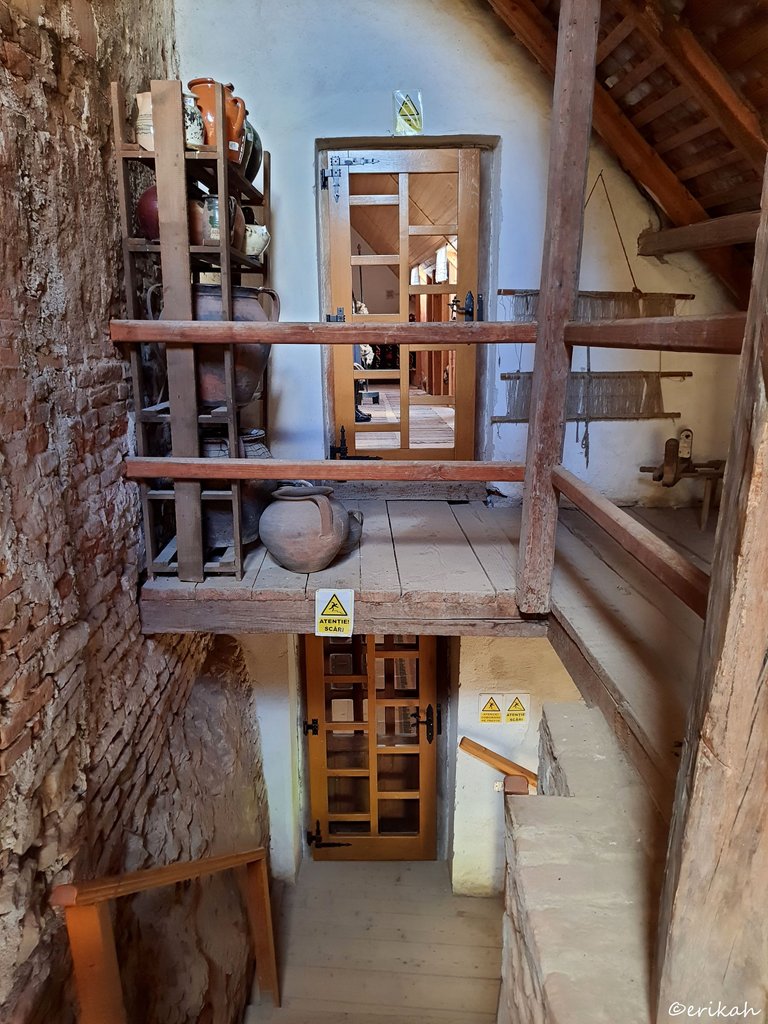
The idea is a genius one as it doesn't require a luxurious exhibition room. A room in the wall makes the whole thing more authentic in my opinion. After all,there were people living in these rooms, during sieges.

Collecting the exhibited items is a different thing, but I think it's totally doable as many people are donating their belongings these days and those who emigrate are not taking everything with them either, so the best place to keep them safe is the museum.

Saxons have a nice folk music, of which these musical instruments are part of. Accordion, trumpets (I hope those ate trumpets :P) are all used by them. The sheet music seems old and the suitcase dates back to 1783. Back in those days, live music was the only form of music. Then later the record player arrived, when there was electricity already.
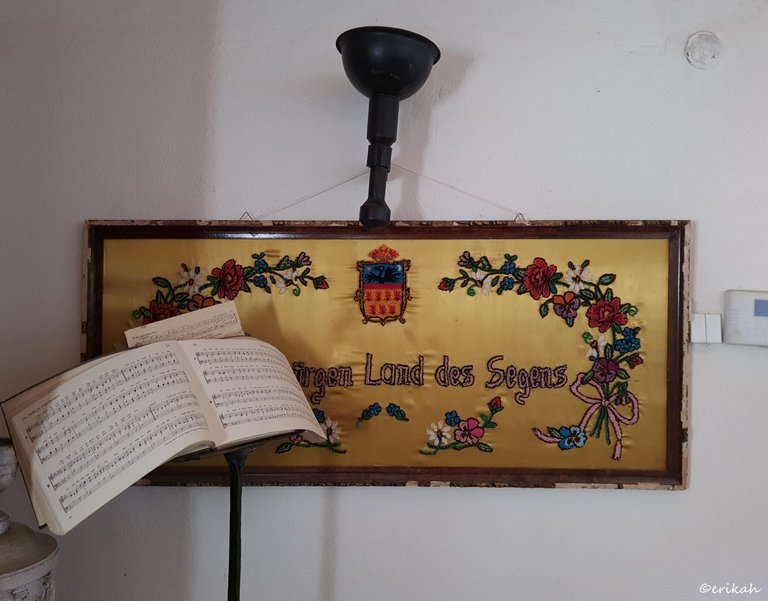
Fine art was only available for the rich, so the rest was left with folk art. These wall embroideries were very common in those days. Most of them were cross stitch embroidery. This is actually a higher quality embroidery, I haven't seen many of them so far. In the middle, the coat of arms of Transylvania.
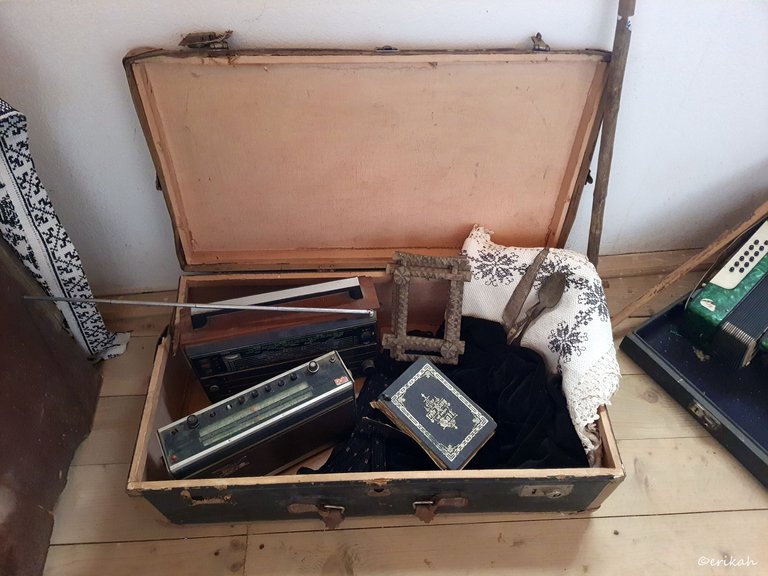
I don't agree with all the items you see on the photo above. The radios are from the 70's, 80's (my estimation) and have nothing to do with Saxons. Those are Romanian make. The bible on the other hand is genuine.
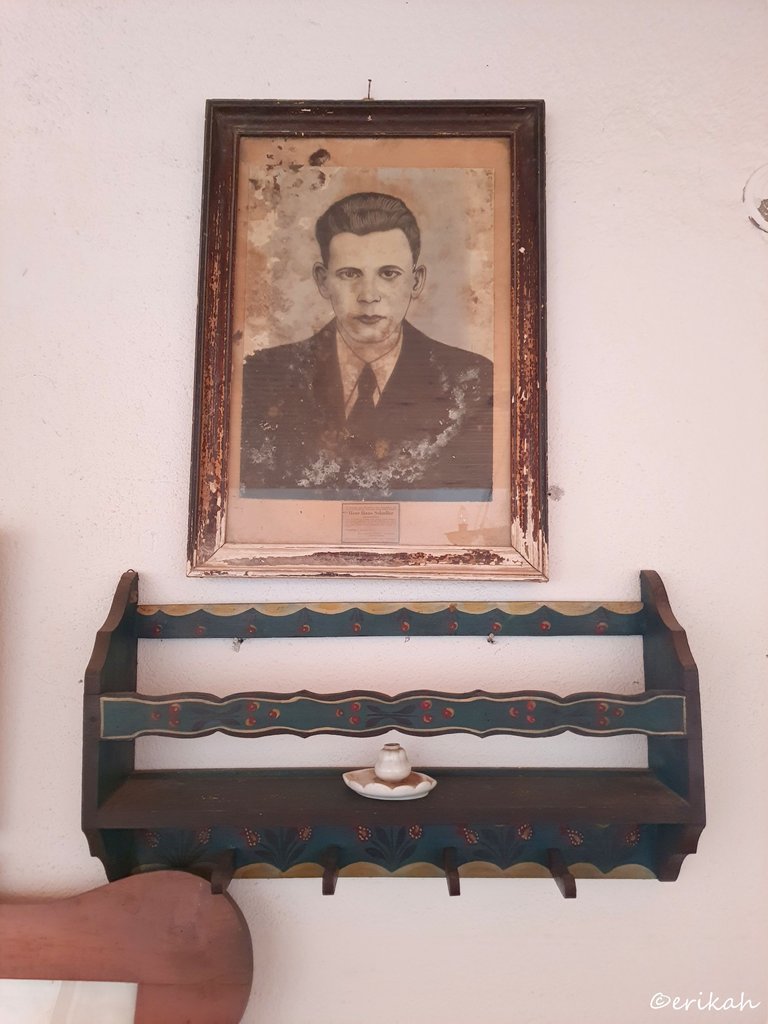
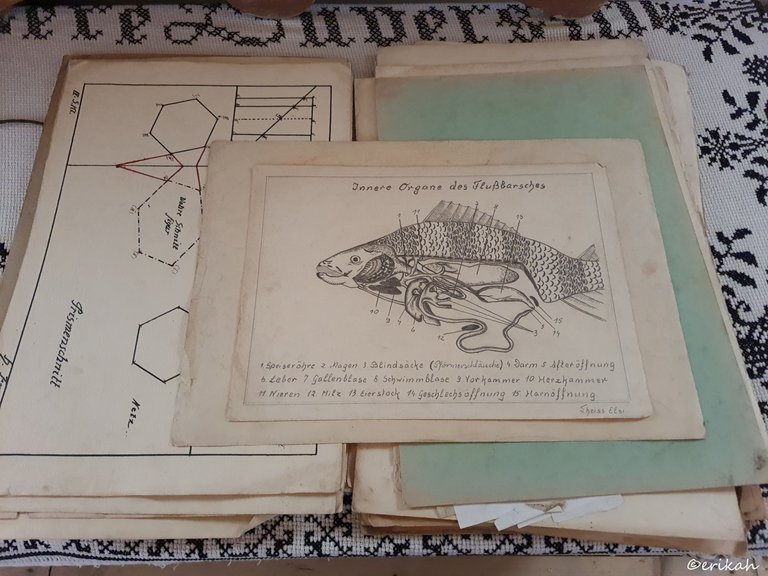
Before photographing was invented, the only way to illustrate something, was through drawing. Internal organs of a fish, what you see on that drawing and beneath most likely there's something related to chemistry.
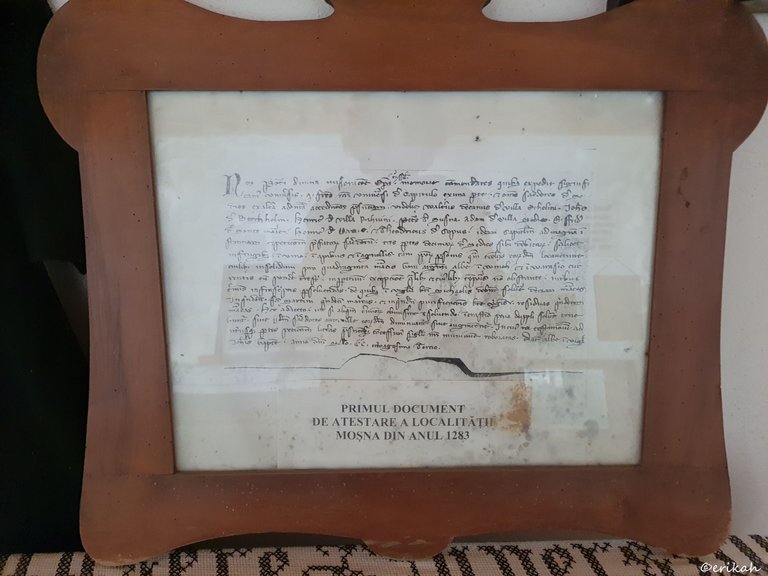
The first official document of Moșna, dates back to 1283.
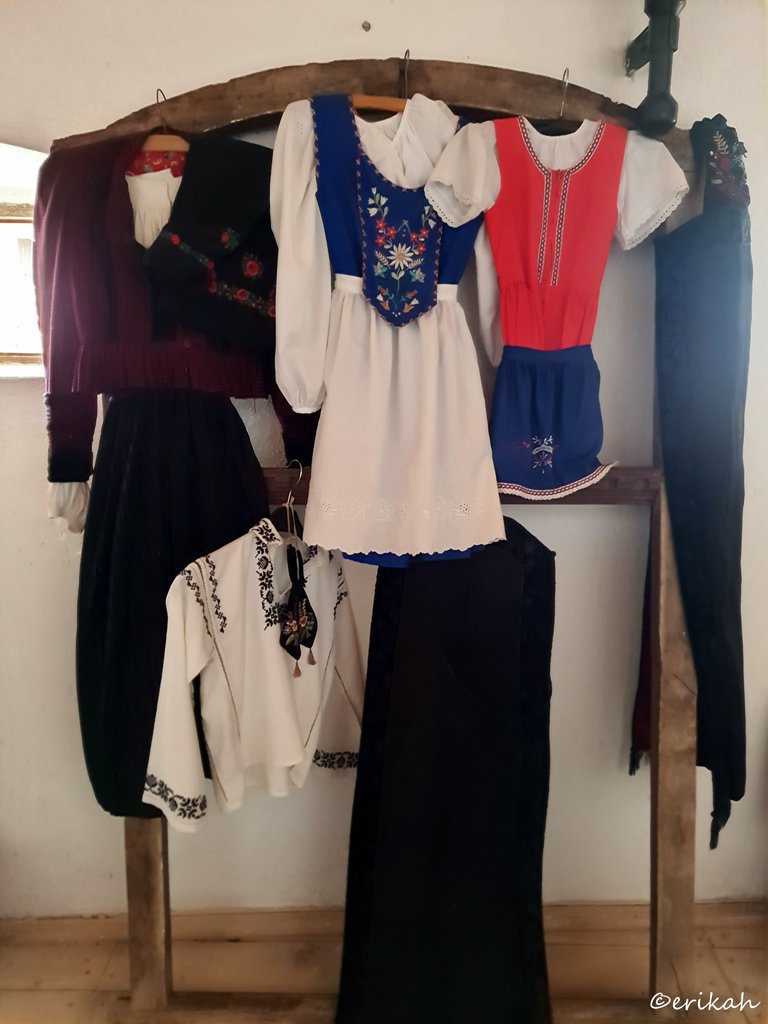
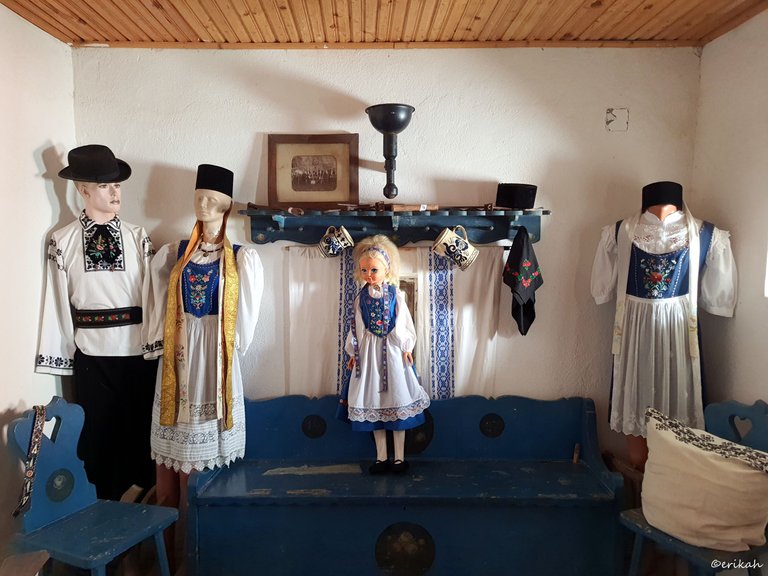

Folk costumes can't be missing from a folk museum. Saxons had and have some very nice costumes, especially women.
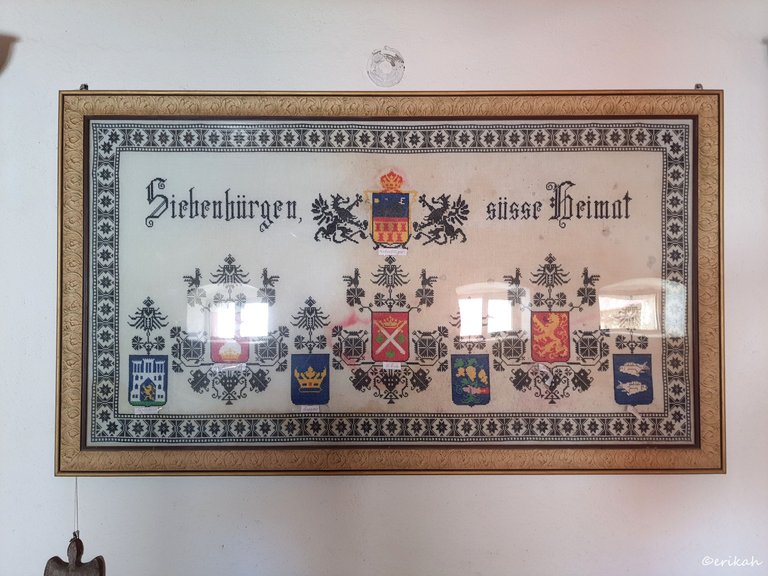
This is actually a very nice and valuable embroidery. It says "Siebenbürgen süsse heimat", which means Siebenbürgen, sweet home.
Siebenbürgen means Seven Seats.
Seven Seats (in German Sieben Stühle, in Latin Septem Sedes) was the name of a territory on the King's Land (Königsboden) in Transylvania (in German Siebenbürgen, i.e. "seven cities": Sibiu, Brașov, Mediaș, Sighisoara, Sebeș, Rupea, Bistrița ), representing the administrative units of the Transylvanian Saxons, from the 12th century to the end of the 19th century. source
You can see the crests of the seven cities that formed Siebenbürgen and on the top, the coat of arms of Transylvania.
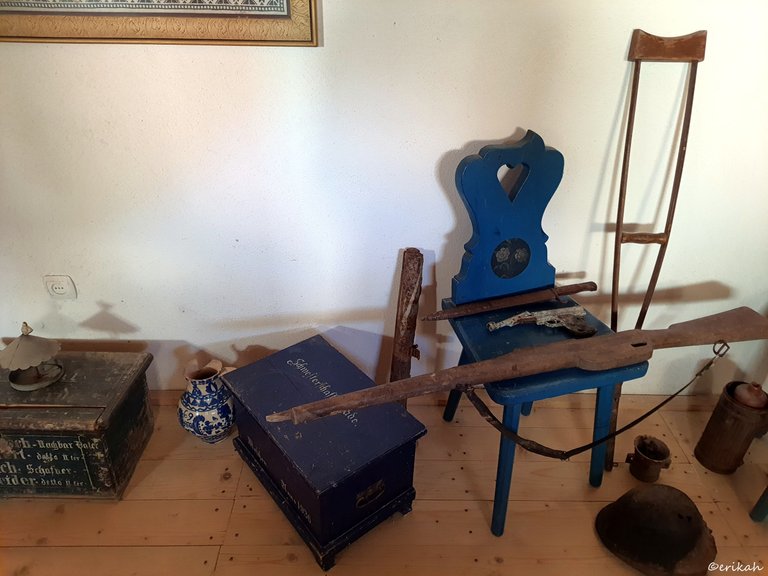
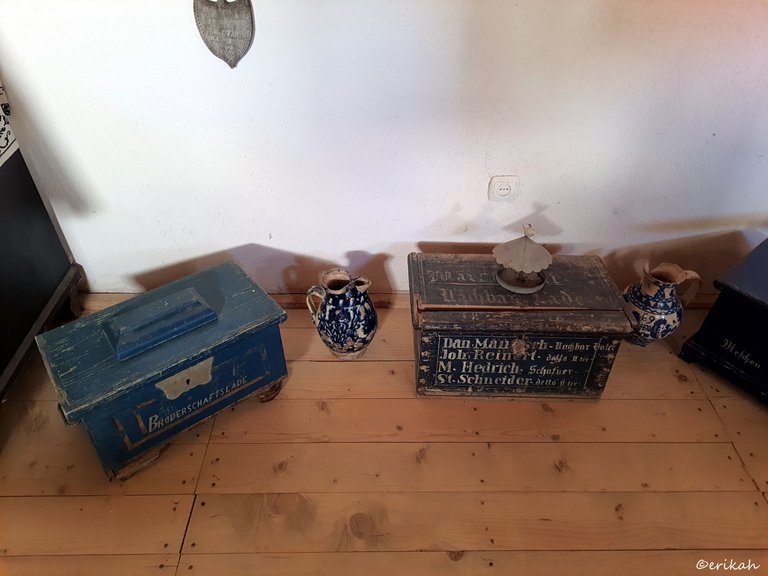
I tried to find a year carved on those old, wooden boxes as both look pretty old, but there was none.
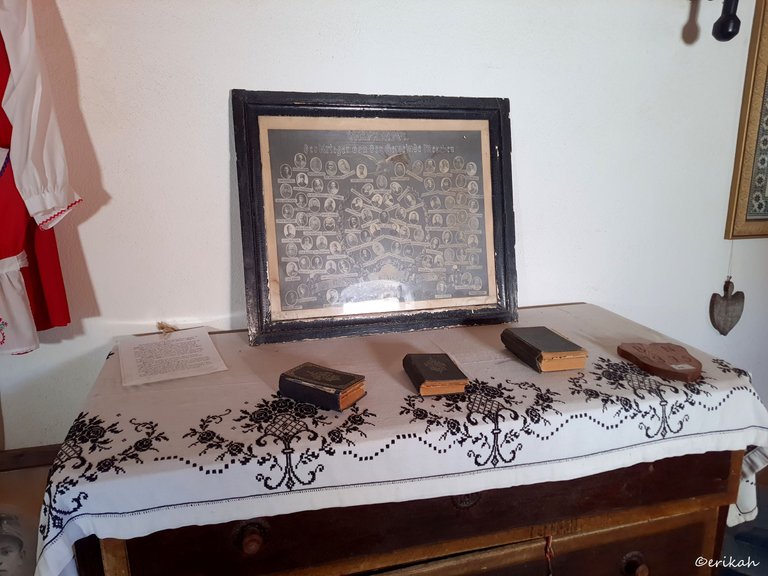
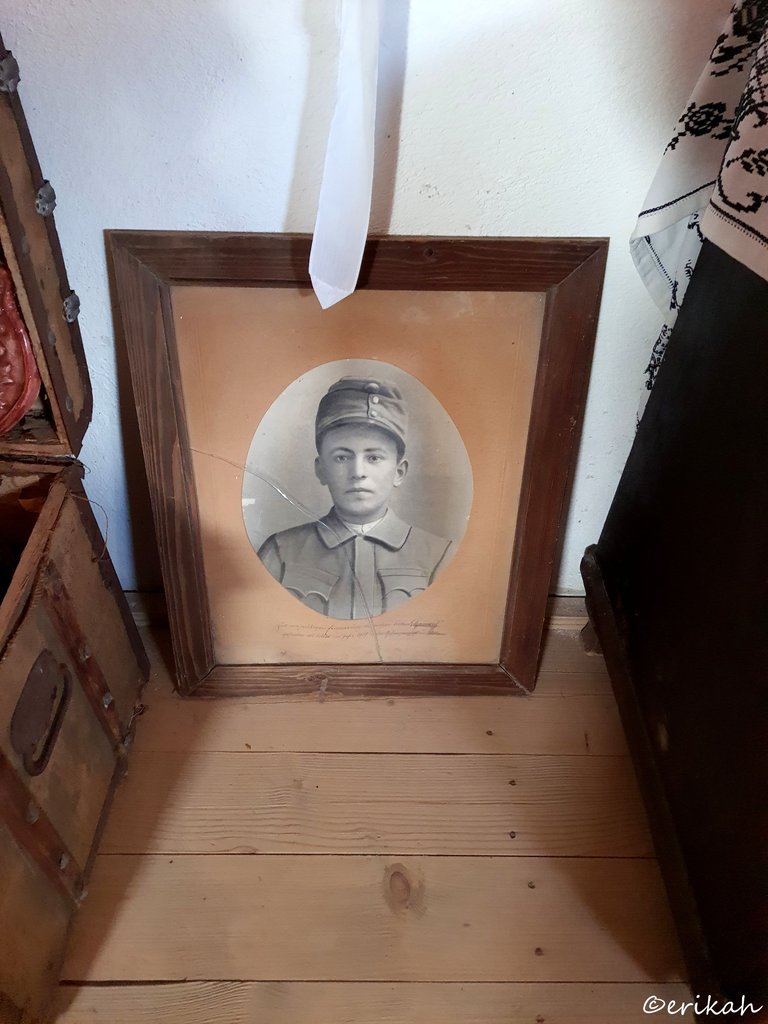
A photo of a young soldier. Back in those days the custom was to hang wedding photos and family photos on the wall. There's a chance this poor kid has never came home.
Unfortunately design was not the strong suit of those who set up the museum, or it was not finished yet. Many of these items were just put on the floor.
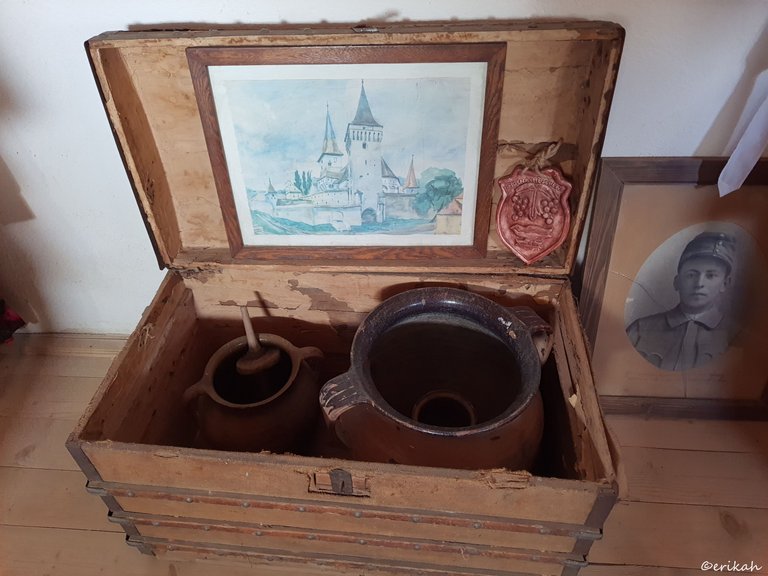
A chest, some ceramics and a nice drawing of the Moșna fortress.
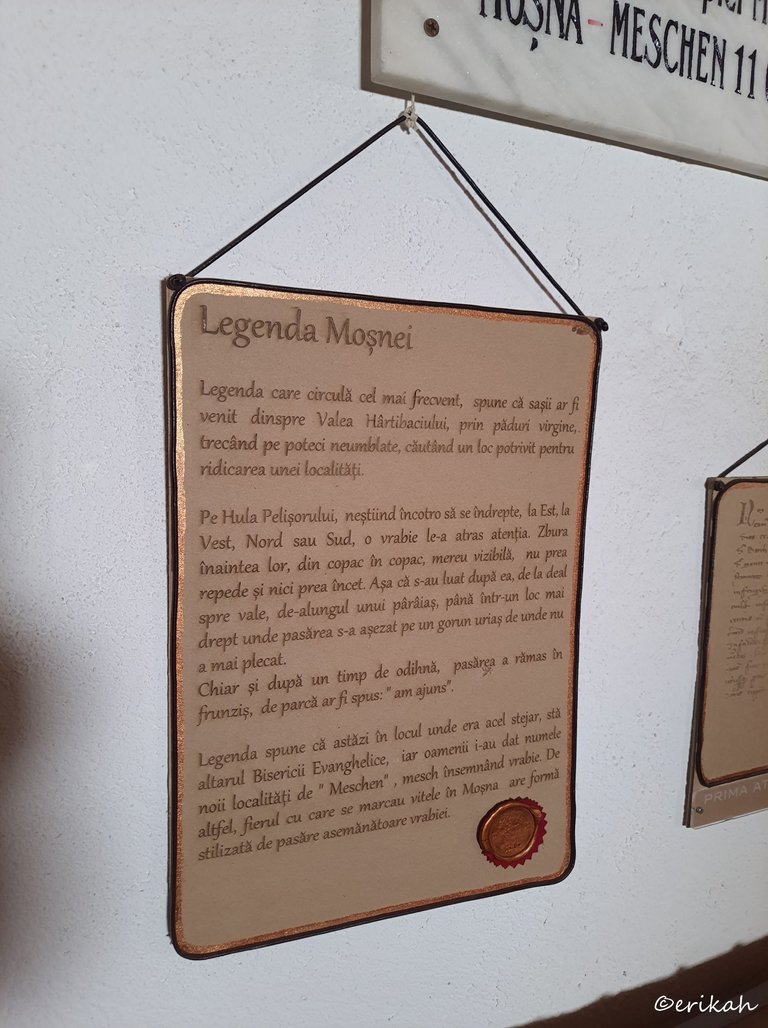
This is the legend of the place and the Evangelical church. I'm going to quote the summery as the text is not mine.
Saxons came from Valea Hartibaciului, looking for a place to settle down. They didn't know where to go, they were looking around, when they spotted a sparrow. Then they followed the bird, which stopped on an an oak tree and didn't want to fly away. It was like she was saying: "We arrived". Legend has it, that where the oak tree was, there's the altar. The village was called Meschen in Saxon, which means sparrow.
I'm not sure how much of it is true, if any, but it's a nice legend.
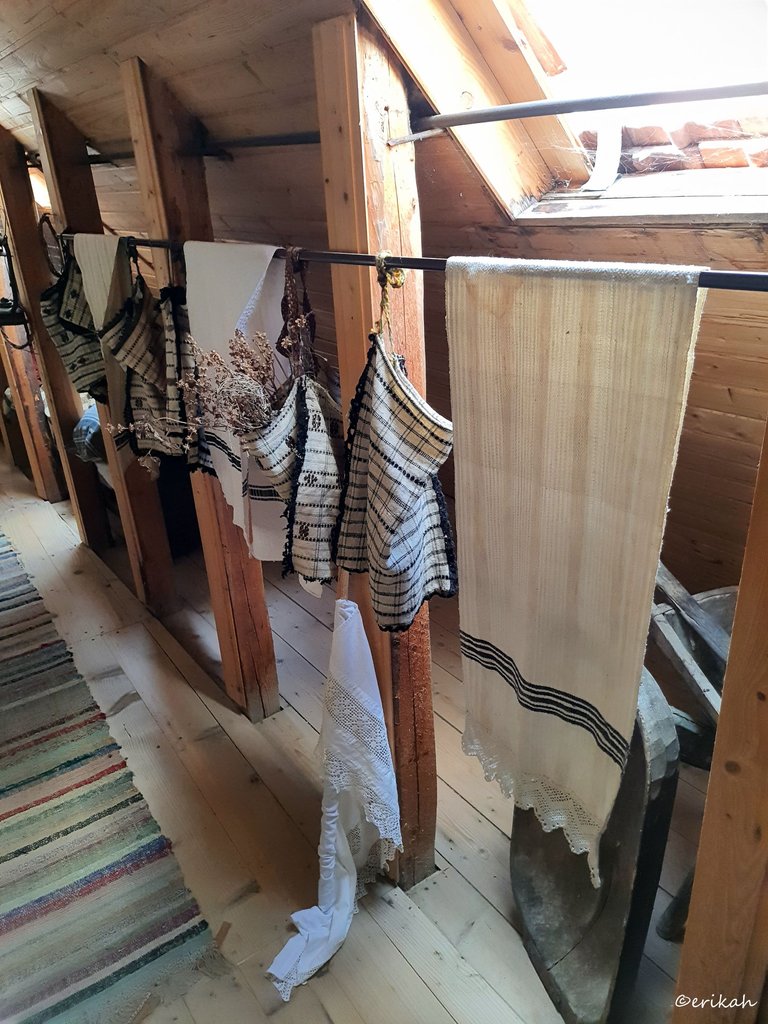
In the other room there were mostly clothes and items used in every days life. These towels were home made (everything was homemade and handmade by the way). There were those woven bags, that women and men used to carry things.
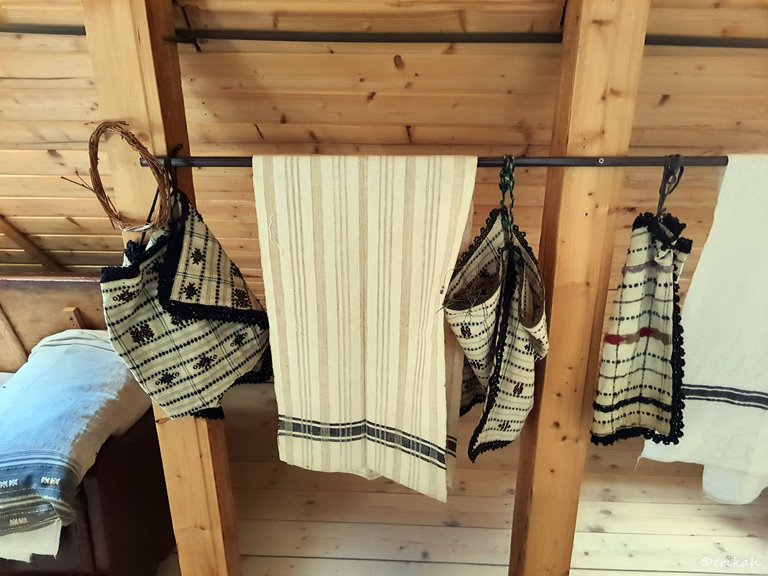
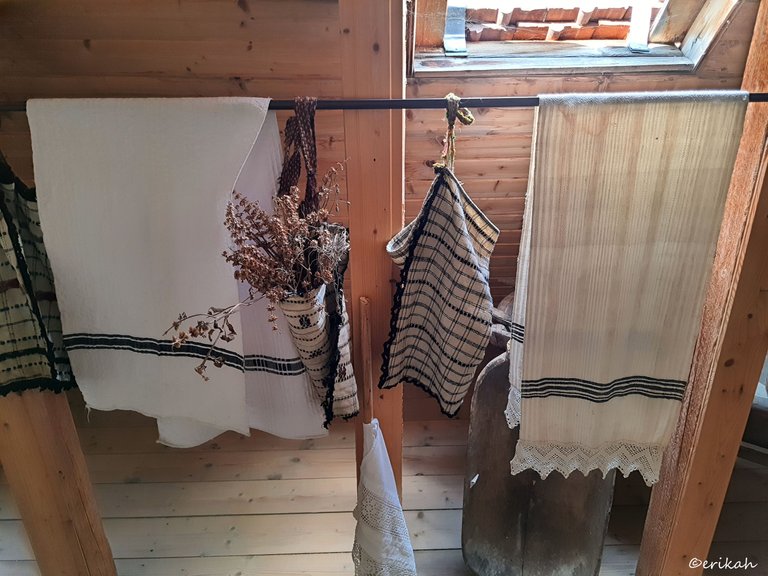
One thing I have to mention here. The towels we have today are soft and fluffy. These towels were extremely rough.
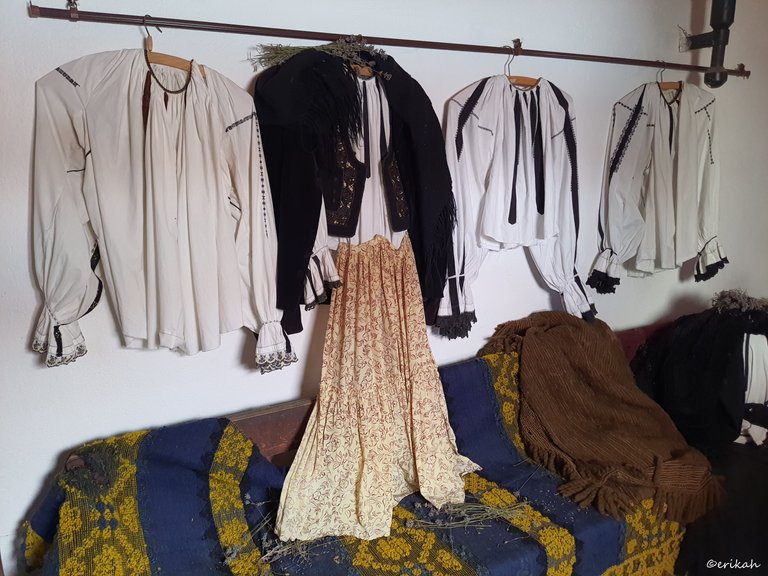
More folk costumes. The skirt however was not authentic, it was made of a synthetic fabric, which only came in later.
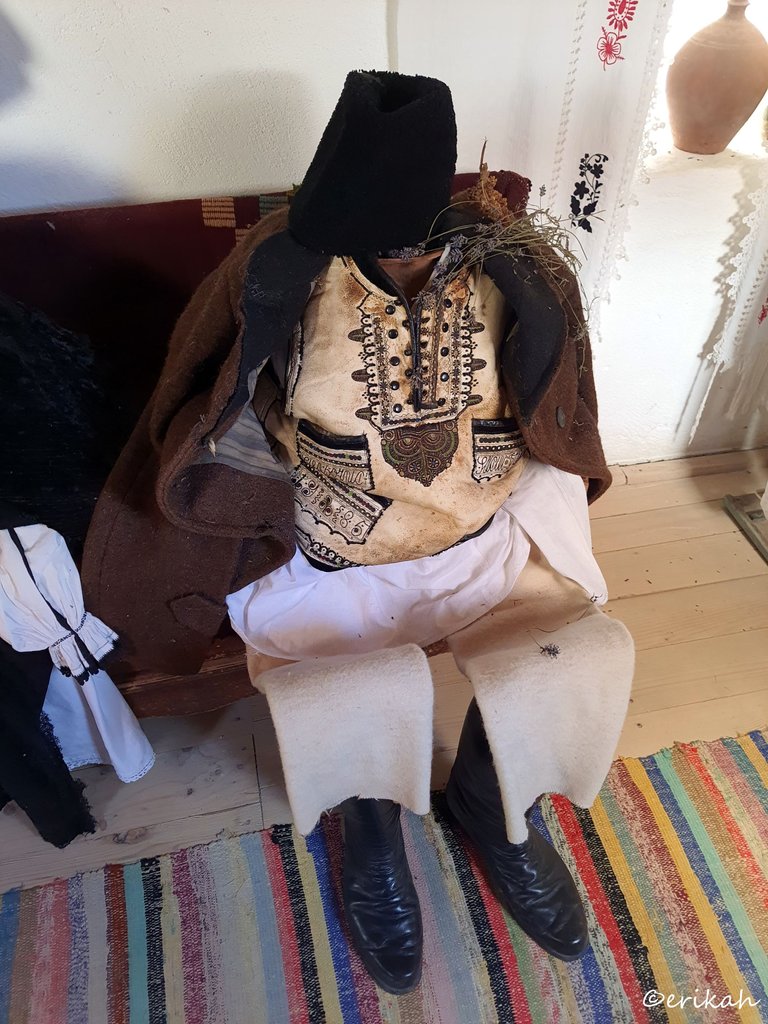
Men clothes.
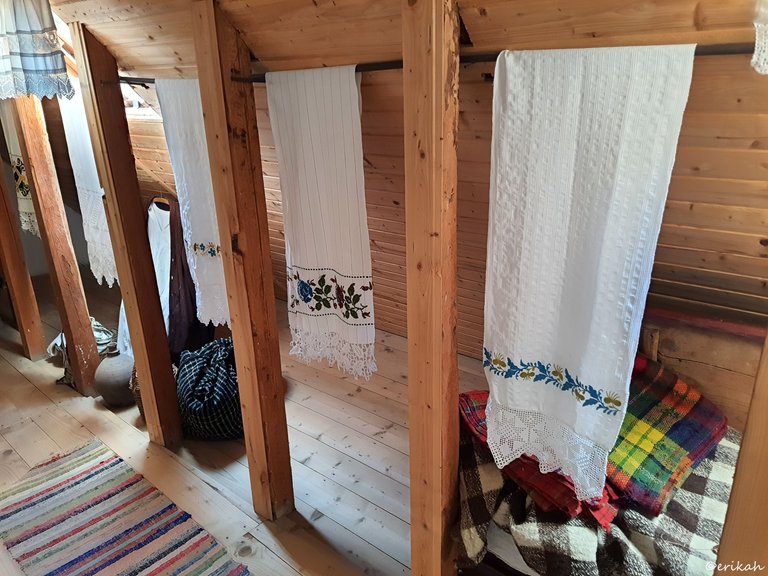
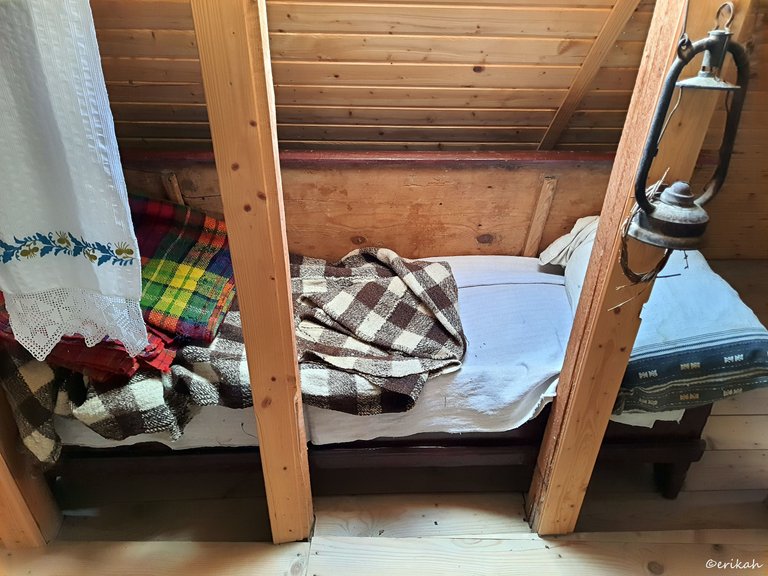
Luxury was unknown to these people, everything was simple, minimalist, but not because that was the trend. They struggled to make ends meet as life was hard.
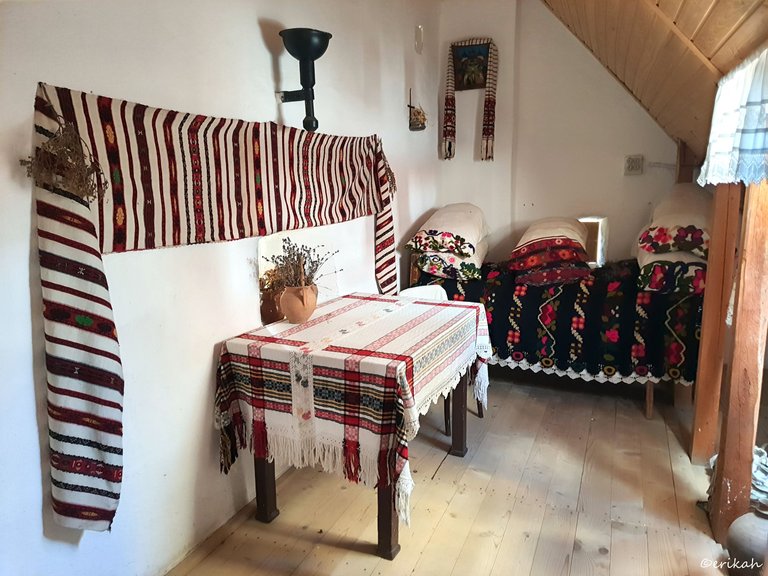
This setup is a bit more luxurious, if I can use that word. That bed cover and the embroidered pillow were of someone a bit more well established than the poor.
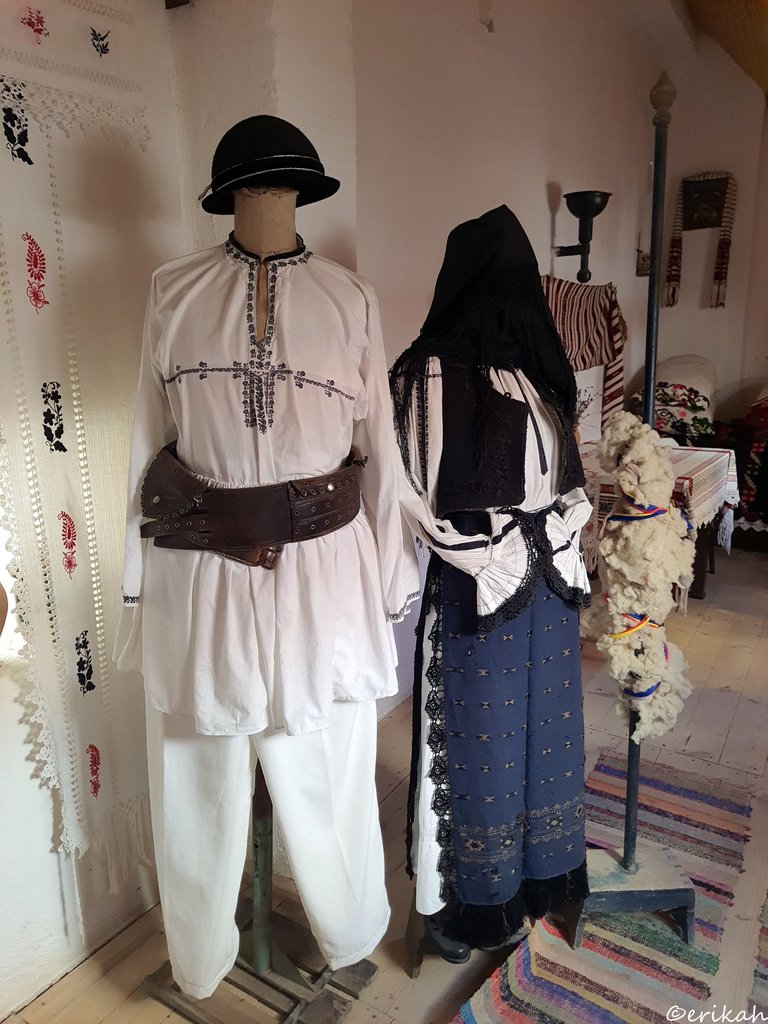
Husband and wife dressed up in traditional folk costumes.
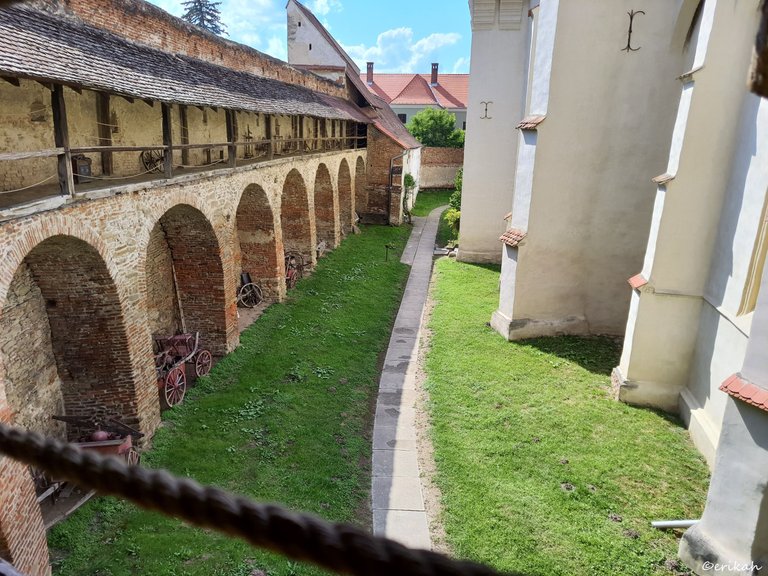
View of the church and the wall, from the gallery.
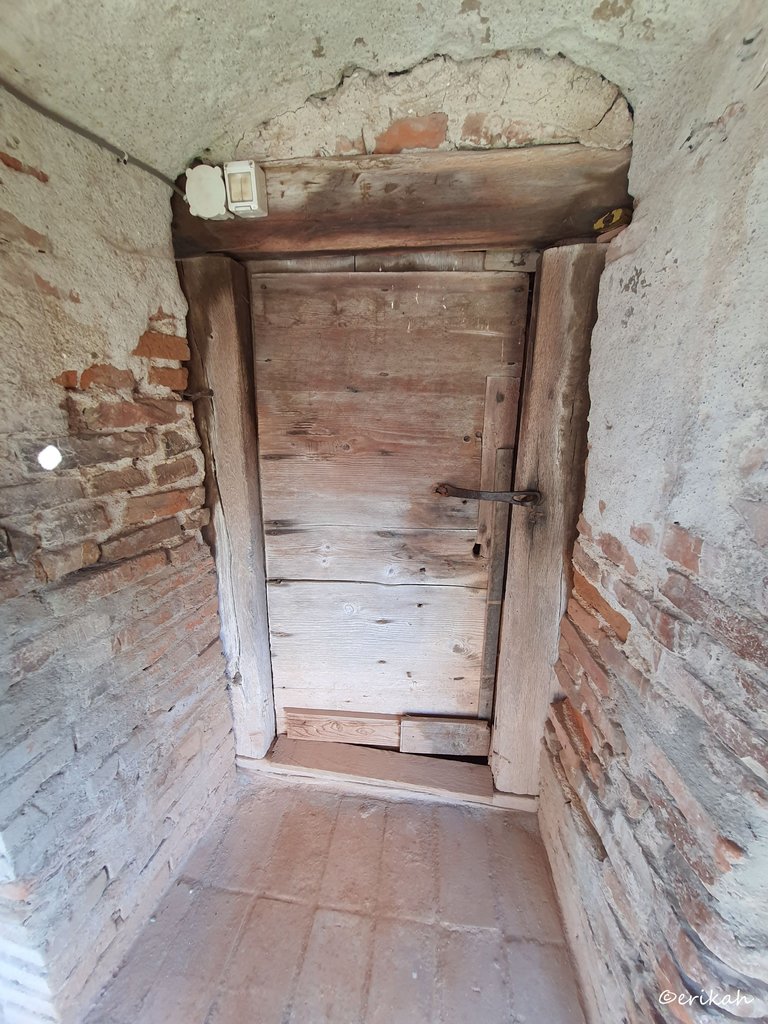
Door in the wall,most likely leading to a small room, but it was locked.
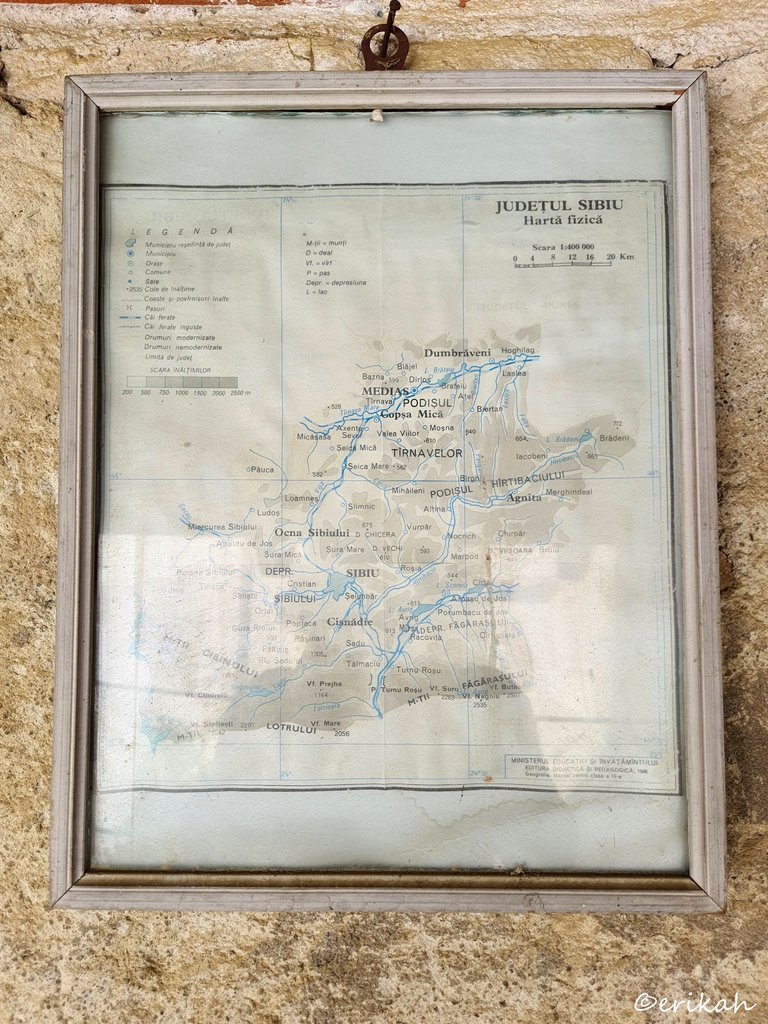
Old map of Sibiu county.
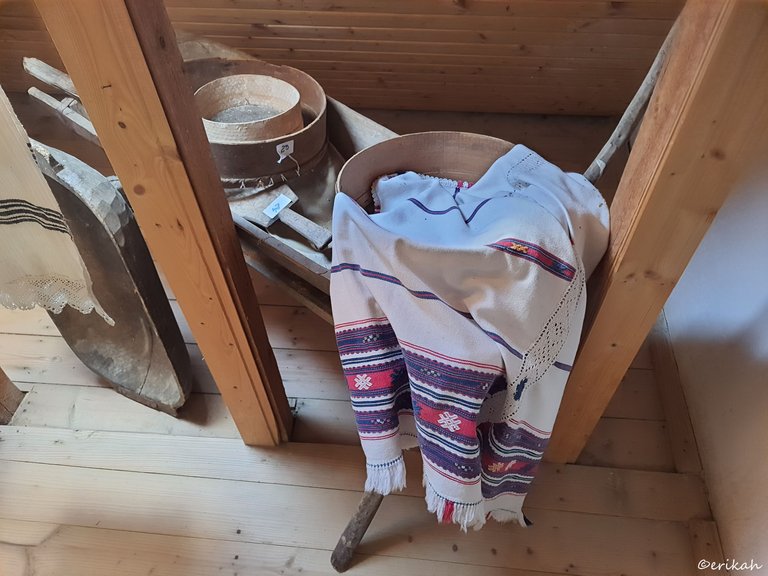
Kitchen tools you need to make bread.
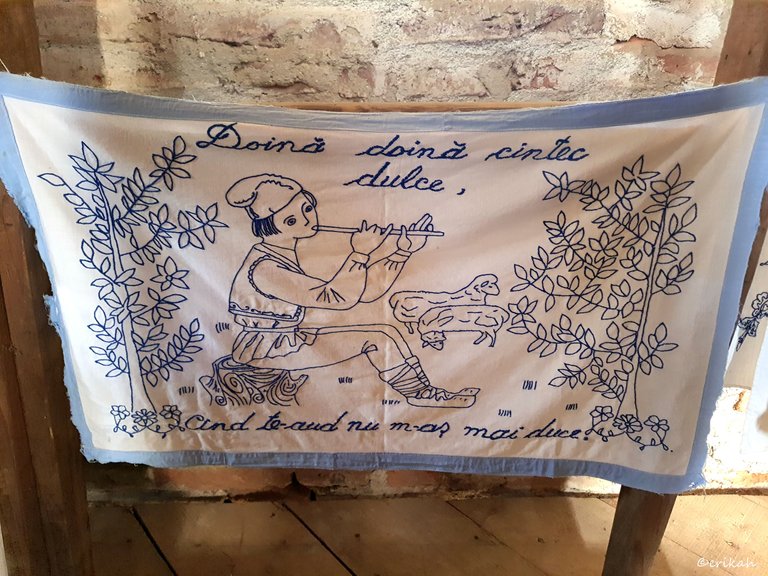
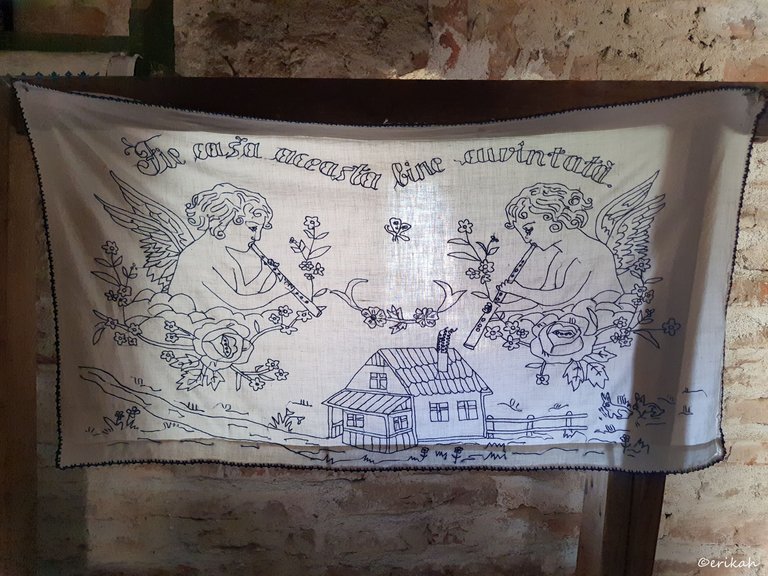
Each home had a few of these hand embroidered wall cloths, with well wishes or blessings.
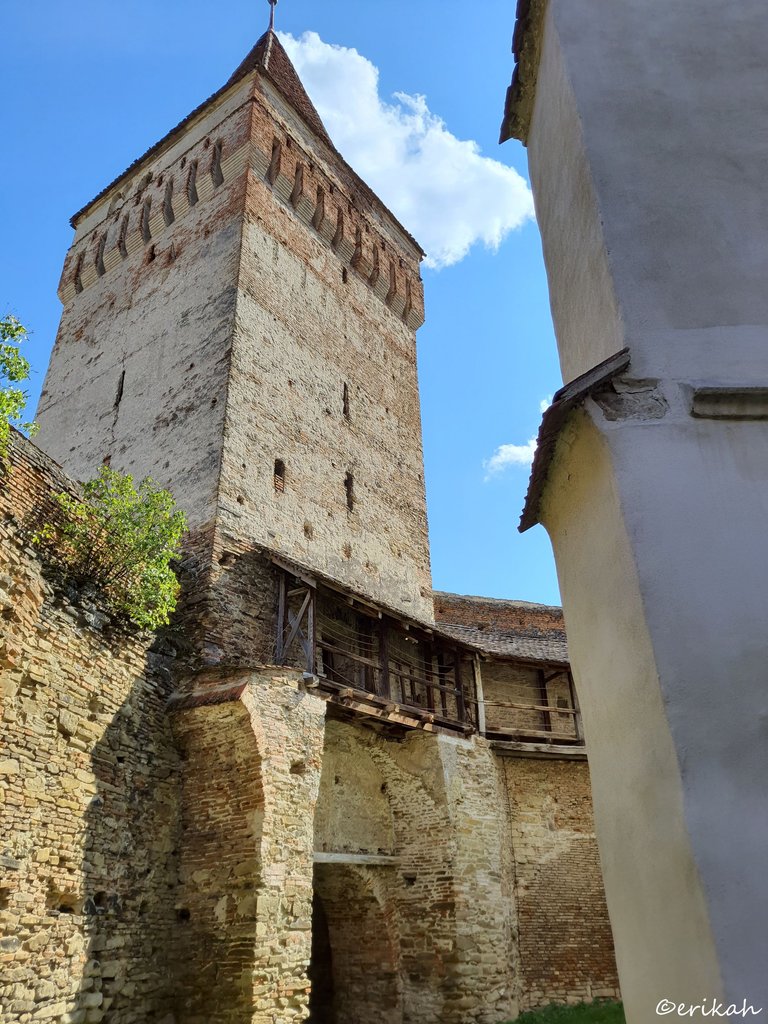
Part of the wall and a gate leading to the main street. That gate is usually closed.
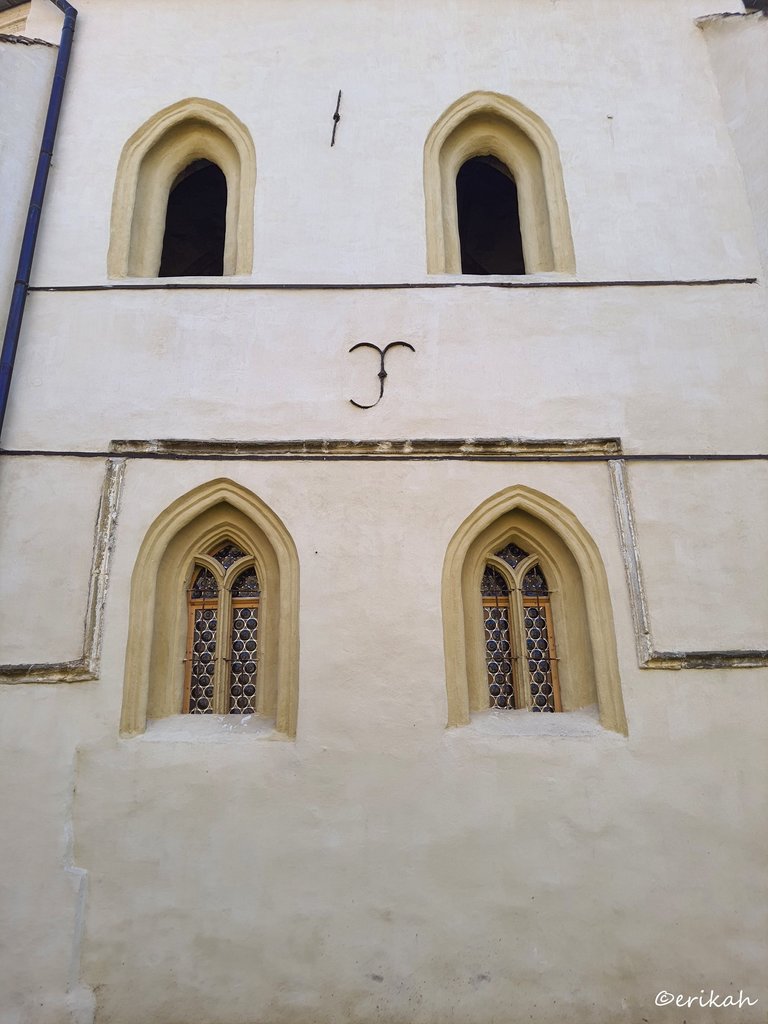
Side windows of the church.
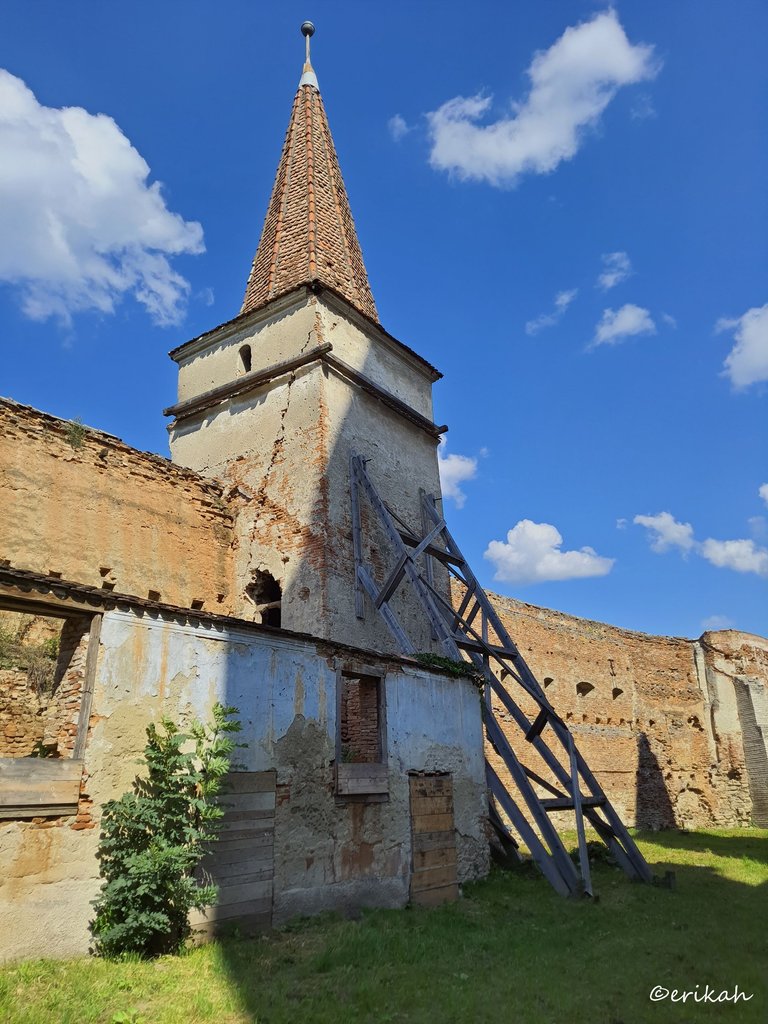
One of the bastions, which was closed due to its poor condition. The wall also was consolidated to prevent it from collapsing.
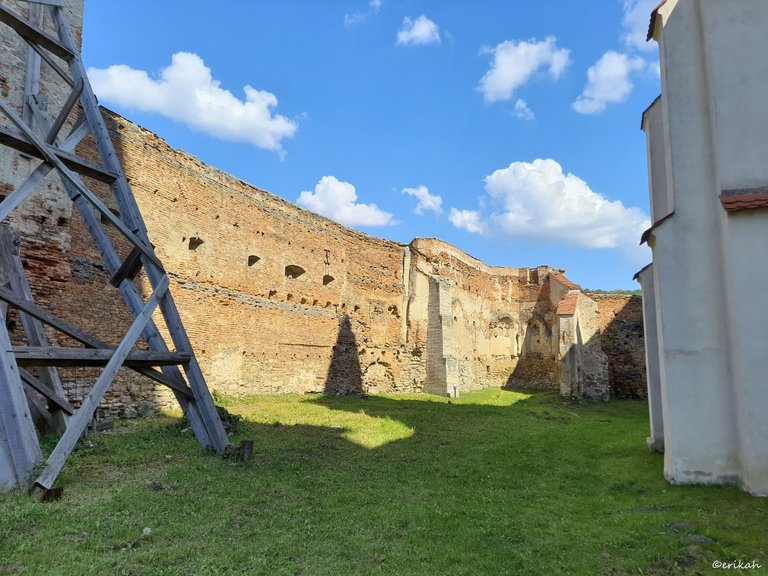
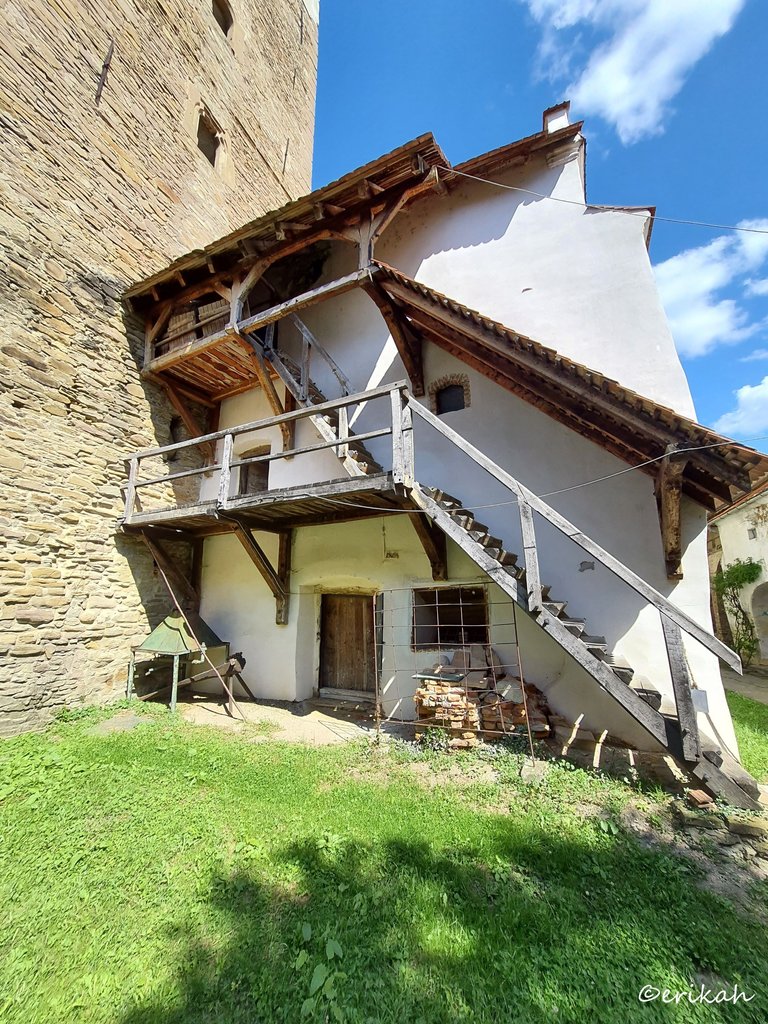
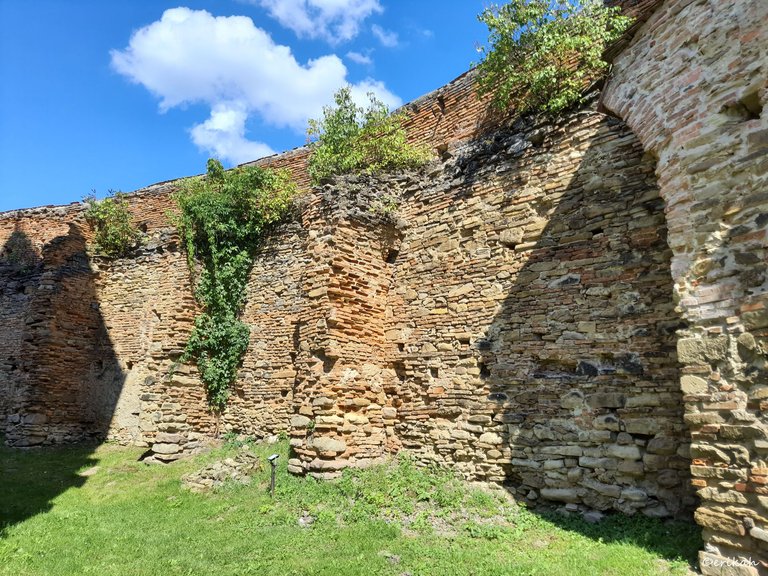
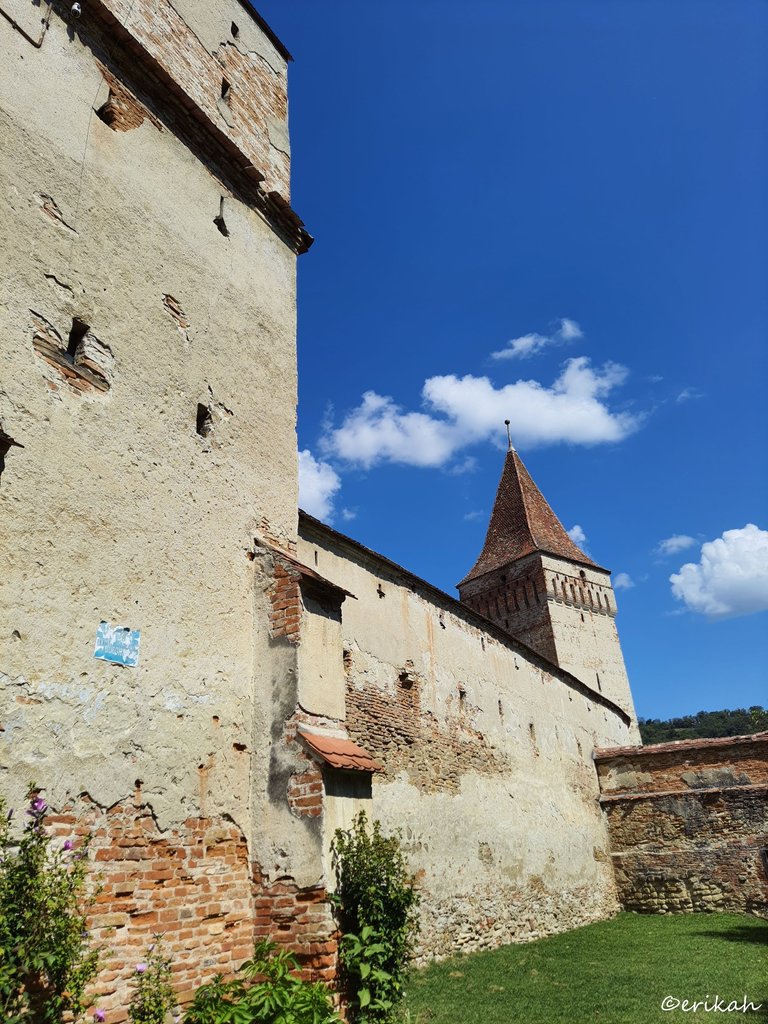
One of the bastion from outside.
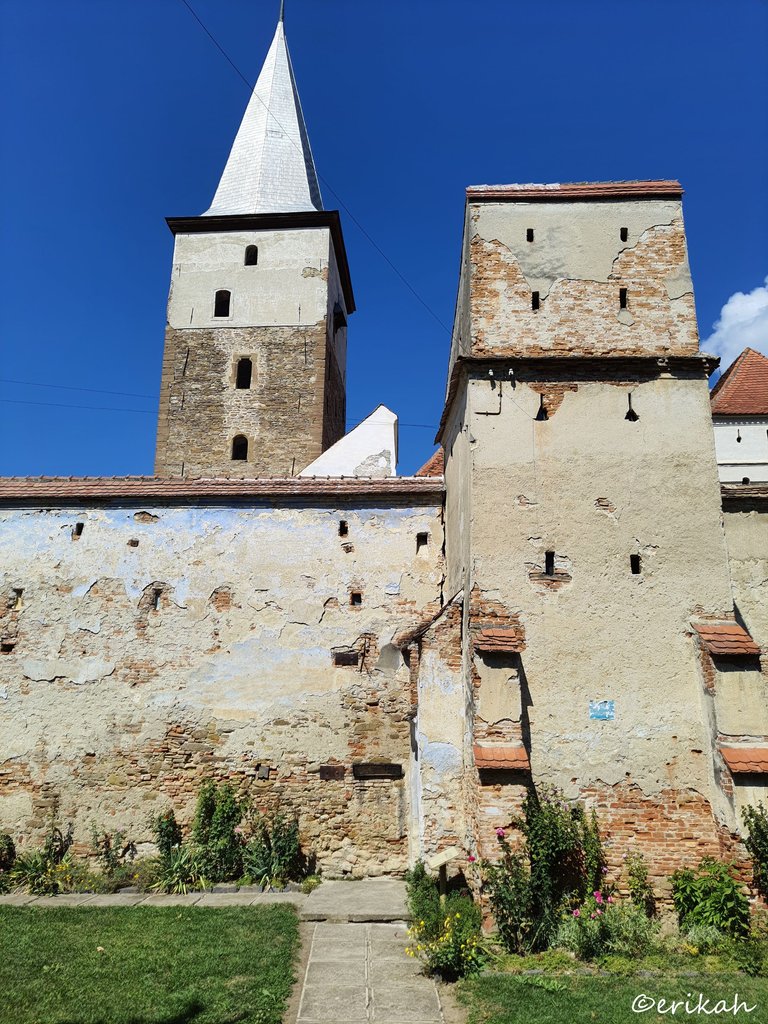
The entrance to the fortress.
All in all, this is an important piece of history of Saxon culture and worth visiting, if you're in the area.

If you're a newbie, you may want to check out these guides:
- Communities Explained - Newbie Guide
- Cross Posting And Reposting Explained, Using PeakD
- Hive Is Not For Me
- How To Pump Your Reputation Fast - Newbie Guide
- Tips And Tricks & Useful Hive Tools For Newbies
- More Useful Tools On Hive - Newbie Guide
- Community List And Why It Is Important To Post In The Right Community
- Witnesses And Proposals Explained - Newbie Guide
- To Stake, Or Not To Stake - Newbie Guide
- Tags And Tagging - Newbie Guide
- Newbie Expectations And Reality











